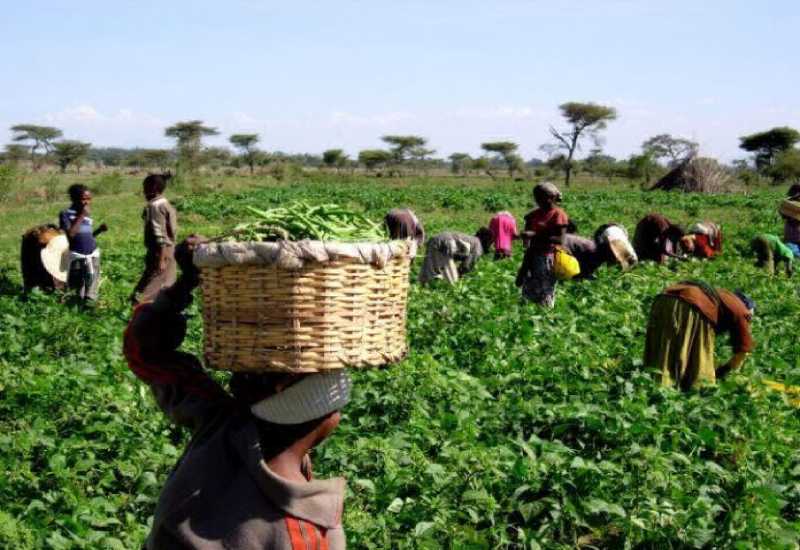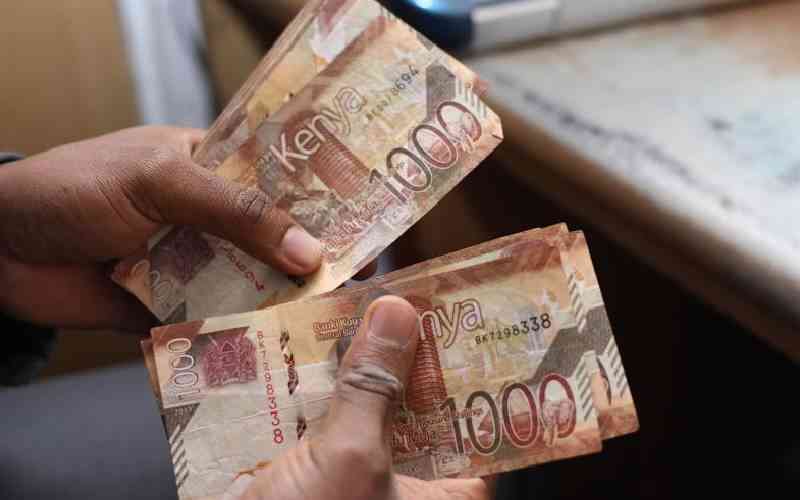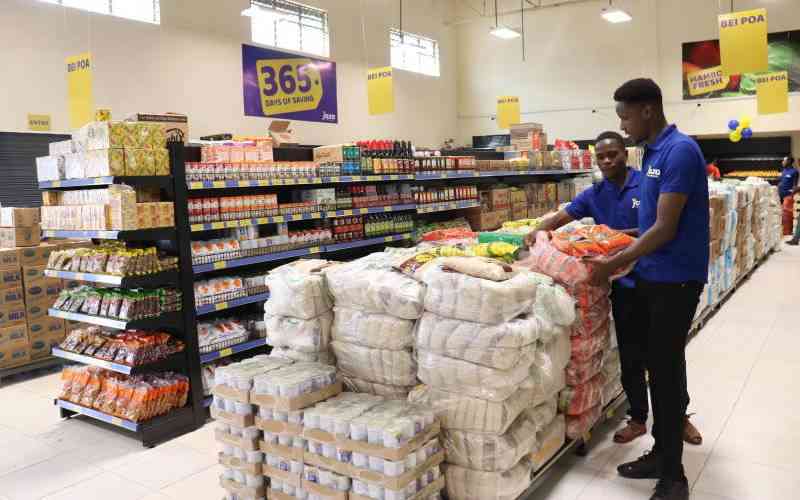
Last year, Kenyans dived into farming with unparalleled gusto. Lured by enviably high prices of food commodities and good weather patterns, farmers converted swathes of their land into maize plantations, anticipating to make a killing.
Today, farmers are staring at poverty instead, with nowhere to sell their surplus products. Favourable weather conditions coupled with the after-effects of last year’s defective subsidy programme implemented by Treasury to combat a debilitating drought has left farmers on their own with more produce in the stores.
This has seen prices of key commodities such as sugar, maize, milk, beans, and potatoes plummet. By April 2017, the average price of a 90-kilogram of maize was Sh4,554. Twelve months later, the price has dropped sharply to an average of Sh2,000, according to official figures.
A kilogram of dry beans retailed at Sh105. This has dropped 22 per cent to Sh82 in July 2018, according to official figures. But the period has been a feast for urban consumers who bet on the glut in foodstuff to pay little to consume what rural farmers spent handsomely to produce.
Furious farmers lunged at Senate Committee that sat in Eldoret town, Uasin Gishu County recently to vent their anger about the pitfalls of maize farming. “We are in big trouble. There is maize in the stores, there is maize at NCPB cereals, and there is maize that awaits harvesting,” said one farmer.
The country’s economy has also benefited from tribulations of millions of poor farmers with a boom in farming and livestock keeping significantly swelling its size.
Between April and June this year, Kenya’s gross domestic product (GDP) - calculated by summing up all finished goods and services produced - expanded at 6.3 per cent. It was the fastest quarter two growth in five years.
“The quarter in a review was characterised by favourable weather conditions across the country. As a result, agricultural production improved significantly compared to the same quarter of 2017,” said the Kenya National Bureau of Statistics (KNBS) in a statement. True, there was considerable growth in most of the other sectors of the economy owing mostly to a return of calm after a protracted electioneering period.
However, because agriculture contributes more than a third of the country’s GDP when it sneezes, as it did last year when the ‘skies refused to open’, the economy catches a cold.
And any positive movement in crop production and rearing of livestock reflects positively on the overall size of the economy. Thus, in the period under review, the agricultural sector recovered from a drought-laden 2017 to grow by 5.6 per cent compared to a decelerated growth of 0.8 per cent realised in the same quarter of 2017. Suddenly, Kenyans enjoyed an impressive supply of maize flour, tea, coffee, milk, and sugar.
“We are delighted that farmers nationally responded well and we are experiencing good performance across all agricultural sub-sectors,” said the Cabinet Secretary for Agriculture Mwangi Kiunjuri.
“We expect that Kenyans should be enjoying lower food prices than is currently,” said Kiunjuri on a day that he directed retailers to sell a two-kilogram maize flour at Sh75.
And as a result, each Kenyan is estimated to have grown richer with GDP per capita valued at Sh24,767 during the three month period. This is a slight increase from a GDP per capita of Sh24,407 in the same period last year. But farmers are hurting.
The paradox of a rich Kenya, poor farmer has already captured the mind of several observers. “This year, no farmer will make money but there is also no one that will go without food,” said Dr Timothy Njagi, a research fellow at Tegemeo Institute, a public policy think-tank. Silos in the North Rift, the country’s bread-basket, are brimming with maize.
Stay informed. Subscribe to our newsletter
XN Iraki, a lecturer at the University of Nairobi, agrees that due to good rains supply went up and glutted the market. “That has been our problem for ages. When it dries, there will be no food because our post-harvest storage is rarely adequate,” he says.
The Government will soon be buying maize from farmers, but it will have to dispose of the stock it has first.
Last April, the National Cereals and Produce Board (NCPB), the Government’s grain store was offloading 653,496 90-kilogram bags of maize to millers at a price of Sh2,300. NCPB noted that this was part of a “grain refreshing exercise.” But no miller was listening. Besides the availability of cheaper and better quality maize from the market, millers are yet to finish the stock of cheap maize they got from Mexico, South Africa, Uganda, and Ukraine.
Last year, as the drought took a toll on President Uhuru Kenyatta’s re-election bid, the Government opened the country’s borders, allowing for duty-free entry of white, non-genetically modified organism maize from as far as Mexico and South Africa. Between April and December 2017, the State was the sole supplier of maize in the country under the subsidy that saw a two-kilo packet of flour retail at Sh90.
According to official figures, some 15 million bags of maize valued at Sh39.6 billion was imported during this period - taking up all the space in the 39 NCPB depots across the country. The uptick was unprecedented. “During the review period, the quantity of maize imported increased almost nine times due to reduced production of maize, in the country,” said KNBS in The Economic Survey 2018.
While the drought depressed the annual production of maize by only 2.4 million bags, import of the cereal increased by 13.1 million bags to 14.7 million bags compared to 1.6 million bags imported in 2016. The market had an extra 10.7 million bags, an equivalent of the country’s harvest from the short-rains season.
The Ministry of Agriculture in a report tabled to Parliament, had accurately projected a shortfall of only five million bags which would be plugged through importation that would go on to “end of August 2017 when early harvest crop was expected, especially from parts of Nyanza, Western and South Rift regions.”
Maize glut
But the unbridled importation went on to the end of the year when the subsidy programme was discontinued. By December 2017 maize valued at a whopping Sh42 billion came into the country. Slowly, but surely, maize glut crept in.
The poorly structured import subsidy - one that some experts believe was designed to fail – did not affect the supply of maize only. The market was also flooded with cheap sugar from India, Brazil, Mauritius, Zambia, and Uganda as well as milk powder from Uganda and the Netherlands.
While sugar production in the country declined by 41 per cent from 639,700 tonnes in 2016 to 376,100 tonnes in 2017, imports increased spectacularly by 200 per cent from 334,100 tonnes in 2016 to 989,600 in 2017. So bad were things that in 90 days, Sh40 billion worth of sugar had been brought in by more than 100 importers.
Last year, 69,533 tonnes of milk were imported in 2017, up from 17,774 tonnes in 2016, according to figures from the national statistician.
The country spent Sh5.4 billion to import milk last year - five times more than what it spent in 2016. The net effect was a glut as produce from Kenyan farms started trickling into a market already full to the brim with imports. Nonetheless, Government officials are delighted.
“Currently, the nation is experiencing bumper harvests of various crops and livestock products occasioned by favourable weather, government interventions including subsidy fertiliser, big four food security campaigns with farmers, and support to the timely control of the fall armyworm,” said the Cabinet Secretary for Agriculture Mwangi Kiunjuri at a press conference last week.
“We are delighted that farmers nationally responded well and we are experiencing good performance across all agricultural sub-sectors.”
Acreage put under maize cultivation this year increased by 11.8 per cent as farmers, seeing the attractively high prices that prevailed last year, planted maize on a good chunk of their lands. In parts of Kericho, tea plantations surprisingly made way for maize plantations. Production of maize increased by 20 per cent from the annual production of 34 million to 40.9 million bags, said Kiunjuri. But the farmers are hurting.
Sugar milling firms, struggling with operational inefficiencies, now live with the mortal fear of when the price of a 50-kilogram of sugar will fall to below Sh5,000, plunging them further into losses.
Failure on the part of policy-makers is part of the problem, and it runs deeper than just last year’s defective subsidy programme. “Going by what I find on the supermarket shelves, lots of food is being imported from canned fish to rice. We do not protect our farmers the way other countries do; they consider food sufficiency as a matter of national pride,” says Iraki.
A Kenyan farmer has always been under siege. Consumer goods such as onions, textiles, toilet paper and processed tomatoes that can, and have been, easily produced locally have been shipped en masse from China. Kenyan onions cannot compete against Tanzanian onions for space at Wakulima Market - Kenya’s largest wholesale fresh produce market. But local farmers, like other investors, have also been victims of their own irrational decisions.
Last year, the drought affected the production of most food commodities, a situation that saw prices increase. To most farmers, maize, sugar cane, and milk were the in-thing.
Economists call it the cobweb cycle, fluctuations occurring in markets in which the quantity supplied by producers depends on prices in previous production periods.
“Farmers, seeing good prices this season, over-produce the next planting season only to bring the prices down again,” says Dr Scholastica Odhiambo, an Economics lecturer at Maseno University. And after the boom in food production this year, Kenyans should expect a burst next year. “And so the next season they will not produce as a result. And the cycle goes on,” says Odhiambo.
 The Standard Group Plc is a
multi-media organization with investments in media platforms spanning newspaper
print operations, television, radio broadcasting, digital and online services. The
Standard Group is recognized as a leading multi-media house in Kenya with a key
influence in matters of national and international interest.
The Standard Group Plc is a
multi-media organization with investments in media platforms spanning newspaper
print operations, television, radio broadcasting, digital and online services. The
Standard Group is recognized as a leading multi-media house in Kenya with a key
influence in matters of national and international interest.
 The Standard Group Plc is a
multi-media organization with investments in media platforms spanning newspaper
print operations, television, radio broadcasting, digital and online services. The
Standard Group is recognized as a leading multi-media house in Kenya with a key
influence in matters of national and international interest.
The Standard Group Plc is a
multi-media organization with investments in media platforms spanning newspaper
print operations, television, radio broadcasting, digital and online services. The
Standard Group is recognized as a leading multi-media house in Kenya with a key
influence in matters of national and international interest.









